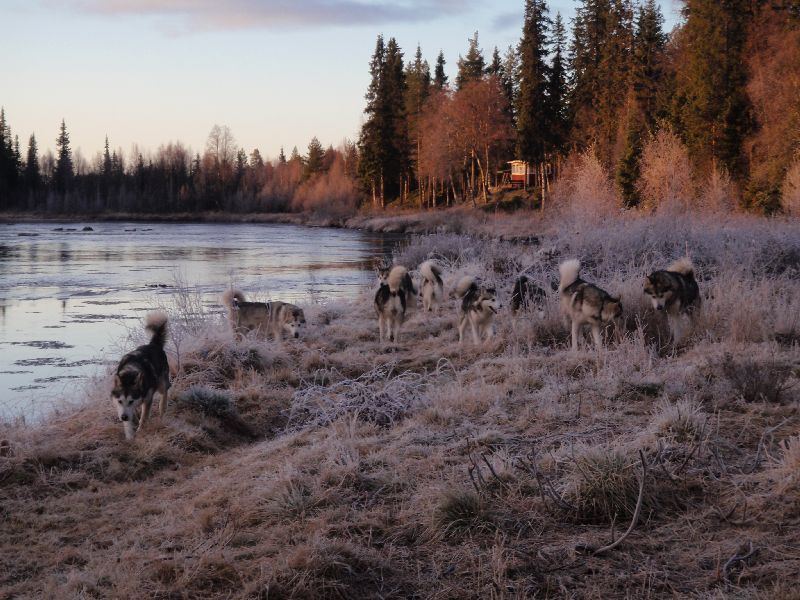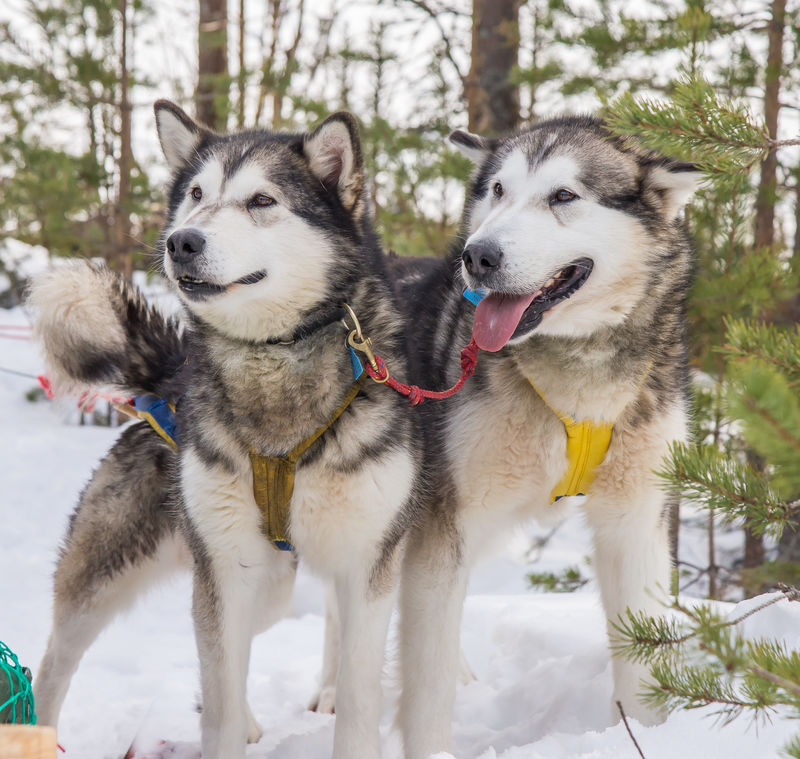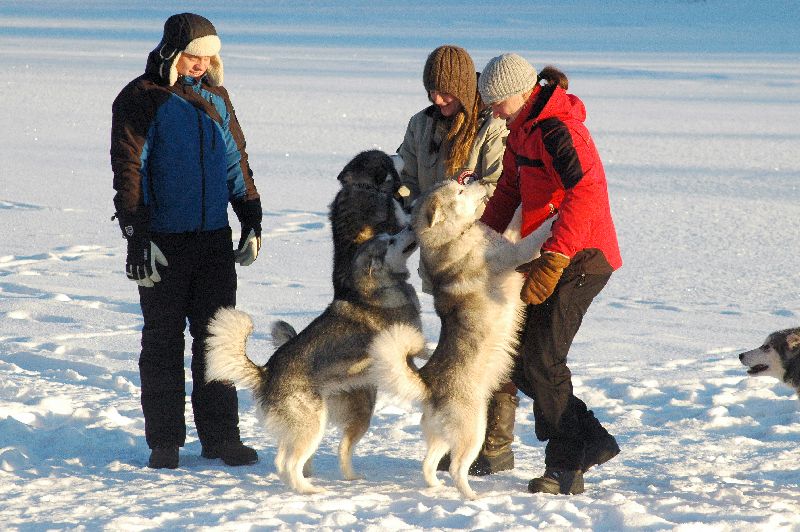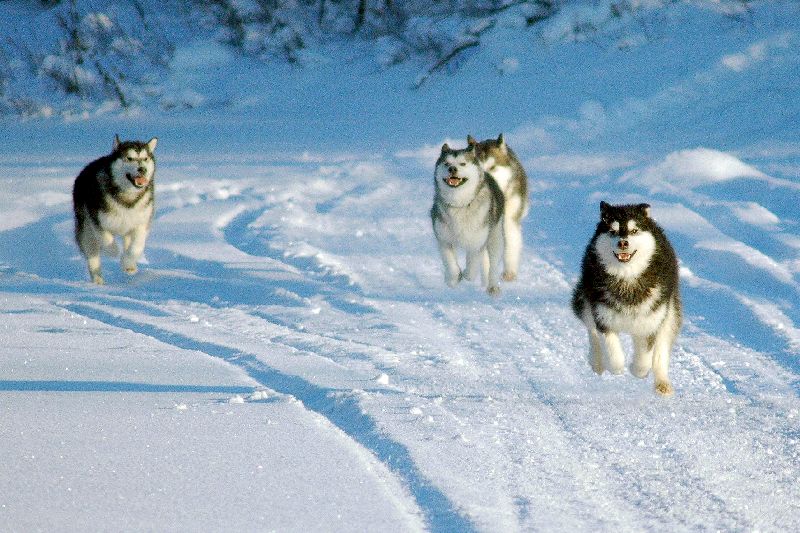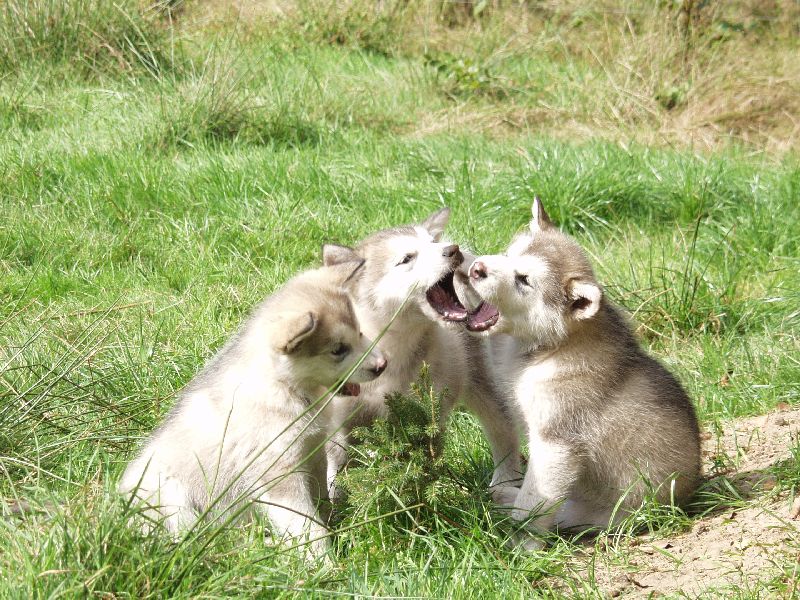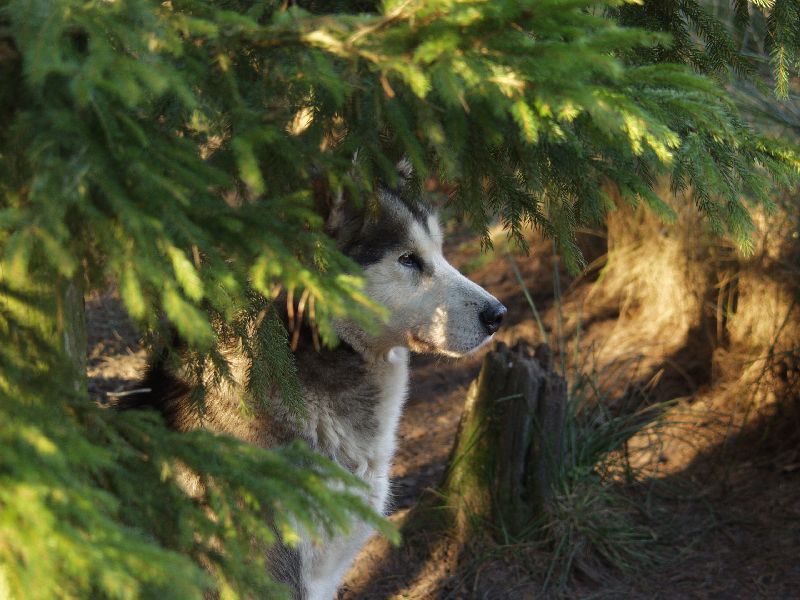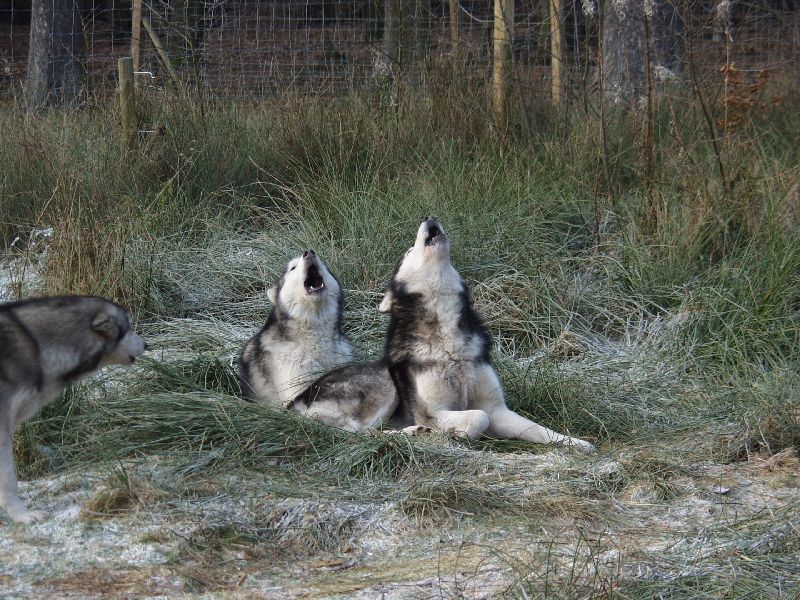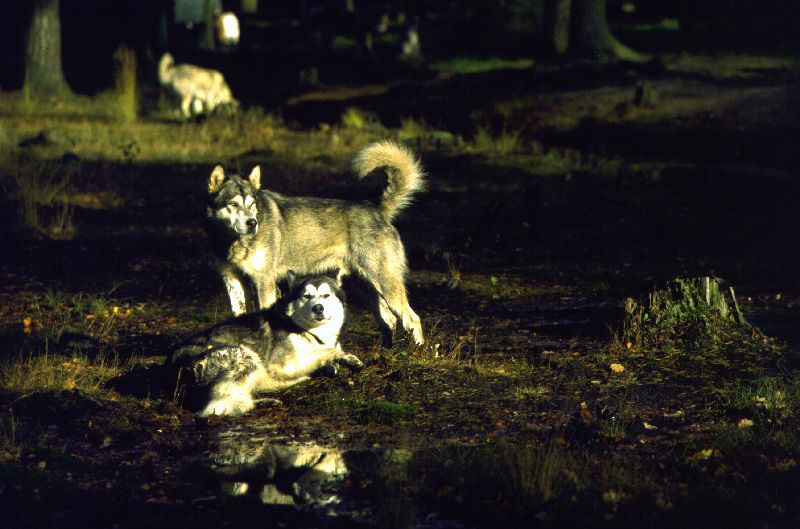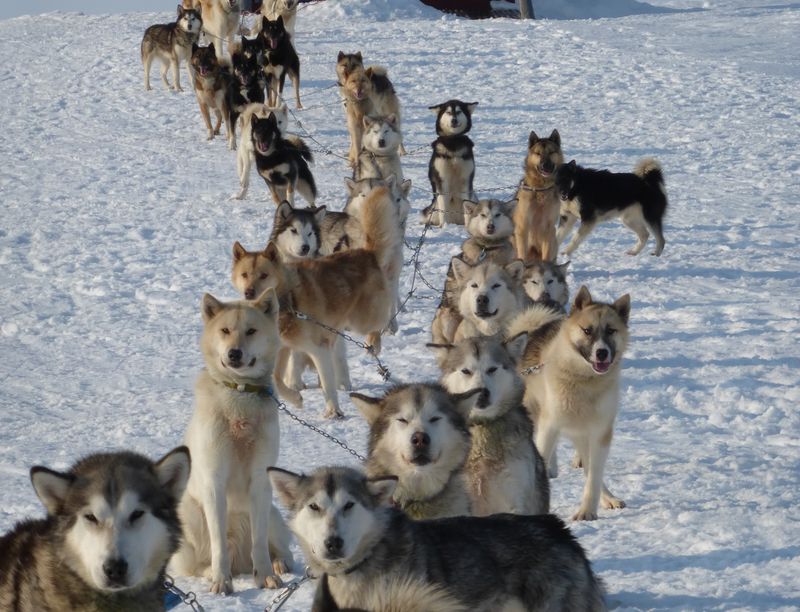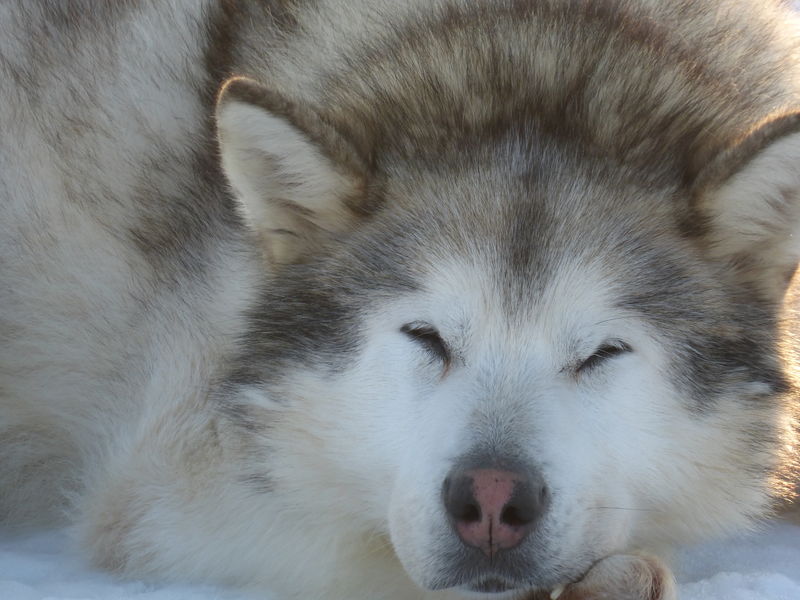Alaskan Malamutes and Greenland Dogs
The most primitive and wildest sled dog breeds, Alaskan Malamute and Greenland Dog, are the dog breeds that most closely resemble the wolf in behavior and character.
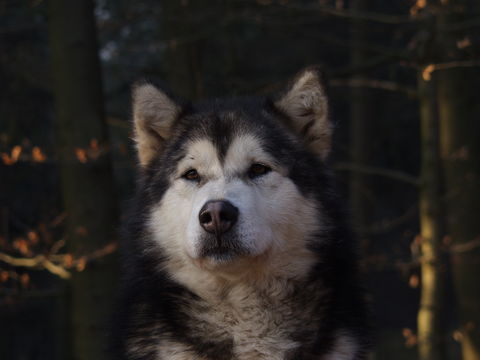
They have always lived in packs for several thousand years and were often left to their own devices during the summer. So they were partly responsible for their own survival and had to feed themselves. Mating with wolves also occurred again and again. Due to harsh weather conditions and the constant struggle for survival, they were exposed to high selection pressure. From this hard life the untamed will to survive and the independent thinking of these dogs result.
"The domestication of the wolf began about 12,000-14,000 years ago. Humans and wolves / dogs fit very well with each other in terms of their hierarchical thinking and social order" (Dr. Dorit Feddersen-Petersen. Hundepsychologie: Wesen und Sozialrechte. 3rd ed .-Stuttgart: Franckh, 1989. p.28).
Clear communication is vital for human and animal relationships
Communication works through various signals, which are expressed through certain behavior, and their interpretation by the recipient. Clear communication presupposes that there is agreement between the sender and receiver about the meaning of the signals. The signals consist of body language, verbal expressions and smells. This results in acoustic, optical and tactile (through touch) communication. Wolves, as well as Alaskan Malamutes and Greenland dogs, live in packs with a network of relationships. Hierarchical structures develop that change according to the relationships.
The leader animal can be male or female and is not necessarily the largest and strongest animal, but the most intelligent with the best leadership skills.
People have always been fascinated by wolves. While the Europeans viewed the wolf as a competitor in the past centuries and almost exterminated it, Eskimos and Indians saw it with different eyes - as competitors and helpers. The Indians observed the behavior of the wolves and built their hunting strategies into their hunting techniques.
Their communal coexistence had many parallels: Indians and wolves both lived in small groups, in which teamwork, loyalty, trust and unmistakable communication were of decisive importance for the success of the hunt and thus also for survival. In addition to teamwork, leadership skills were necessary. Confident demeanor, delegation and clear goal setting led to successful prey.
These qualities have lost none of their explosiveness in today's complicated, constantly changing, fast-paced world. Corresponding relationships can be illustrated using the dog sled packs.
More information at MalamuteQuest.com

